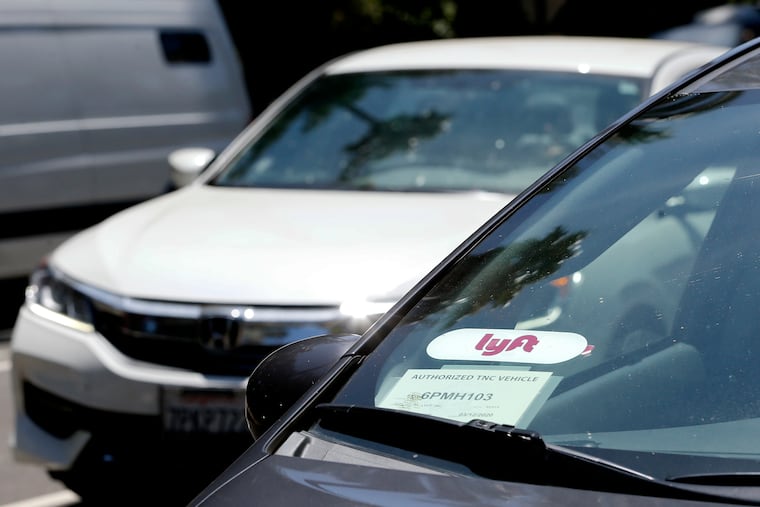As commuters weigh options, Lyft adds transit directions for Philly users
Riders will be able to compare time and cost, making the decision between a 20-minute-long trip on the Broad Street Line for $2.50 or a 15-minute-long Lyft ride for $10 tougher.

Lyft wants to give commuters in Philadelphia a full menu of choices as they weigh how to get around in the “yellow” phase of reopening.
If not already, Philly users soon will be able to see details of SEPTA and PATCO service alongside the rideshare giant’s own options. The feature, available in cities including Boston and New York City, started to roll out in Philadelphia on Tuesday and is expected to expand to all users next week.
Riders will be able to compare time and cost, for example, the decision between a 20-minute trip on the Broad Street Line for $2.50 or a 15-minute Lyft ride for $10.
While not in response to the COVID-19 pandemic, the timing of the rollout “is perfect,” said Caroline Samponaro, head of micromobility and transit policy at Lyft.
“Philadelphia is a transit city, people depend on transit, and we want transit to thrive,” Samponaro said. “So I think it just makes common sense, really, that we would be adding one of the most important options for people into the app to make sure that they have the info they need to travel and to adapt to new routines.”
Uber hopes to expand a similar feature this year in an effort ”to become a one-stop transportation platform,” spokesperson Harry Hartfield said.
“We know that Uber and the cities in which we operate share many of the same goals: reducing congestion and personal car ownership, expanding access to transportation, and tackling air pollution, and we are excited to work with SEPTA and the city to achieve those goals,” he said in a statement.
The full post-pandemic impact on Philadelphia’s streets remains to be seen. Telecommuting will continue to play a role in the “green” reopening phase and may keep some indoors, but Philadelphia’s congestion woes would worsen if more who have the option choose cars over public transportation.
» READ MORE: Advocates want coronavirus to lead to better public spaces in Philly
The Centers for Disease Control and Prevention has its own guidelines on how travelers can protect themselves when using all forms of transportation. On public transit, the CDC recommends riders avoid touching surfaces, maintain social distancing, and use hand sanitizer.
SEPTA is preparing for riders’ return by way of enhanced cleaning efforts, blocked seats to encourage social distancing, and a new face mask requirement. The authority is also encouraging employers to stagger work times to ease typical rush hour crowds.
Regular transit service has mostly returned, while additional Regional Rail service returns later this month. PATCO boosted frequencies earlier this month.